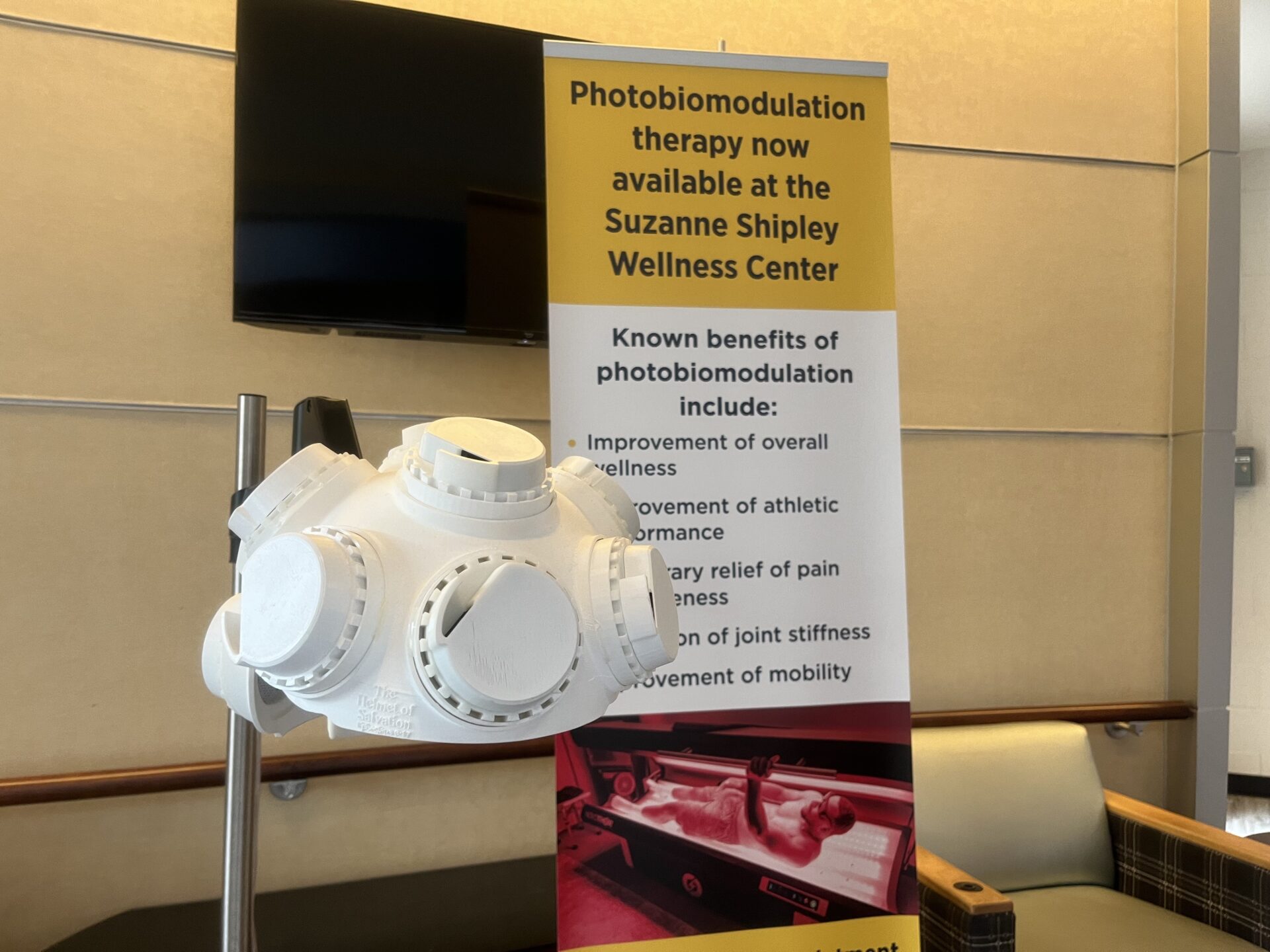Scientists have long recognized the impact of sunlight on vitamin intake, sleep patterns and mood.
But researchers at Shepherd University are taking things a step further with a form of light therapy known as photobiomodulation (PBM). Their goal is to use light to address symptoms of substance use disorder and depression.
The study involves placing a non-invasive helmet over a participant’s head and transmitting near-infrared light for three minutes. Participants regularly attended these sessions, receiving the treatment twice a week for eight consecutive weeks.
This helps stimulate energy production in cells, reduce inflammation and aid the healing of nerves, according to Jennifer Flora, director of the Shepherd University Wellness Center and a co-author on the study.
So far, Flora said the results have been promising. “I was like, ‘You need to run these numbers again,’ because it was so shocking,” she said.
“After eight weeks, those in the PBM treatment group reported significantly fewer cravings and less severe symptoms of depression compared to the control group,” Flora said. “The results were so compelling.”
Flora is working on the project alongside Kelly Watson Huffer, co-author and coordinator for Shepherd’s Doctor of Nursing Practice program.
The results of Flora and Watson Huffer’s study were discussed on Shepherd’s campus Monday, with a presentation on the second phase of the study.
Photo Credit: Jack Walker/West Virginia Public Broadcasting
This will be conducted at the Berkeley Day Report Center in Martinsburg, which serves as an alternative to incarceration for individuals who have gone through legal troubles tied to substance use disorder.
The second phase of the program will continue its phase-one light therapy interventions and compare their results for a second group of participants.
Several state officials attended Monday’s event and expressed their hopes that the study could soon benefit West Virginians.
“The work that’s going on in Shepherd is a critical part of the future of how we tackle the drug epidemic,” said Attorney General Patrick Morrisey. “There [is] a need for additional approaches, creative approaches, to help really make a big difference at some of these cravings, [to] go after the science of addiction.”
“West Virginia has been sort of the most hard-hit place in the country with the opioid epidemic,” said West Virginia State Auditor J.B. McCuskey. “The work that our universities are doing locally to find non-pharmacological solutions to this [is] incredible.”
Flora said her team is currently developing a more portable version of the helmet, which could help people access PBM from the comfort of their homes.
In the meantime, she encouraged state and local officials to consider expanding access to PBM and emerging therapeutic treatments.
“As we continue our research we invite the community — health care professionals and policymakers — to consider the potential of innovative therapies like photobiomodulation to make a real difference,” Flora said.
